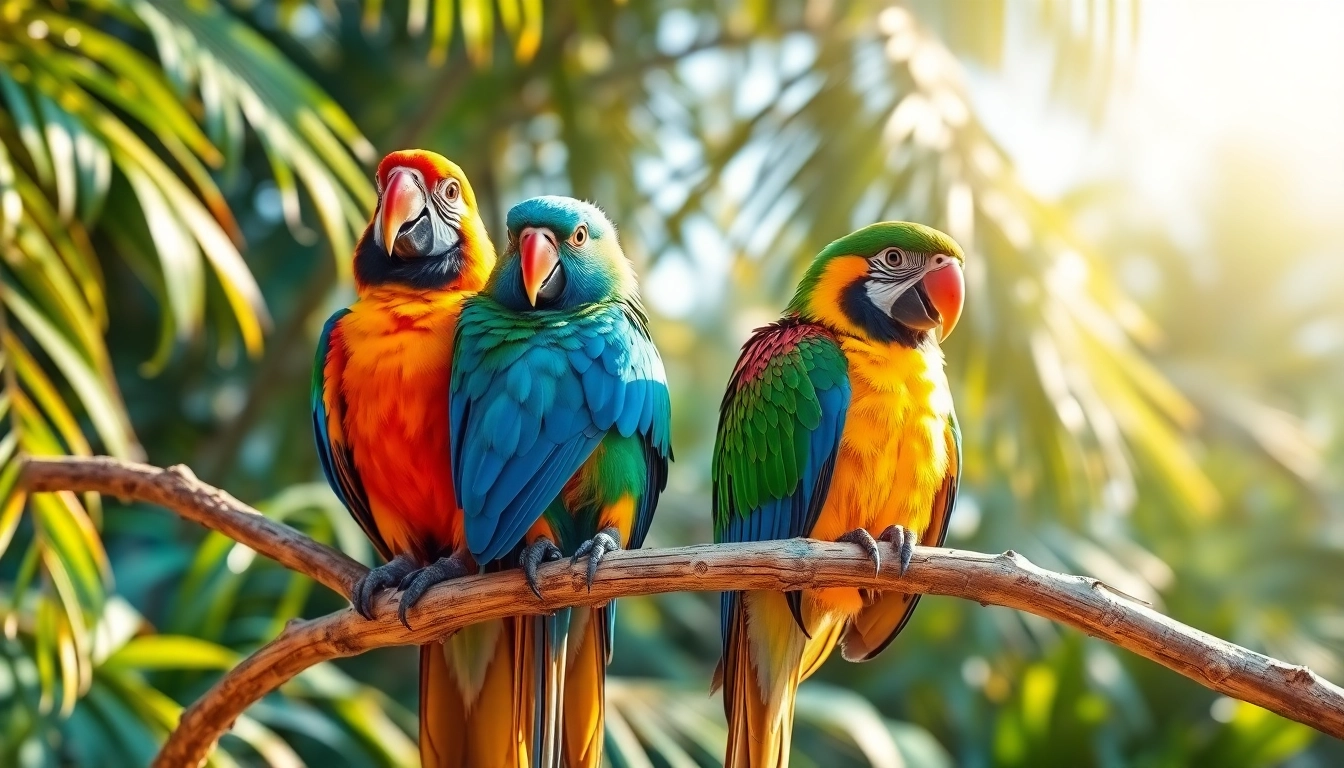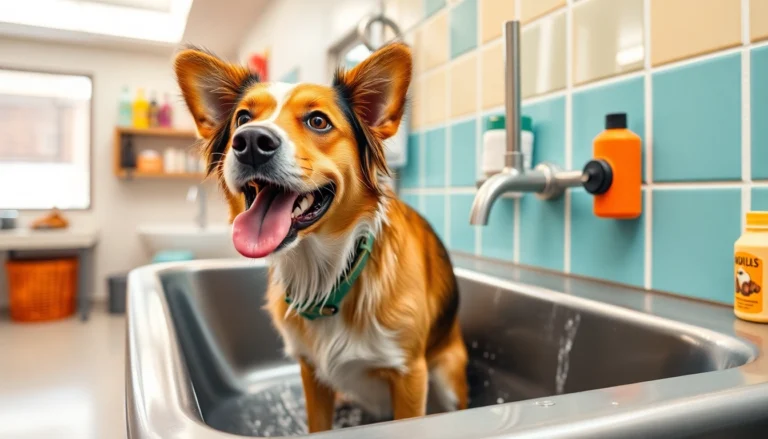
Understanding Parrots: Types, Habitats, and Key Characteristics
Parrots are among the most intelligent and colorful avian species, captivating bird enthusiasts and researchers worldwide. Their vibrant plumage, complex behaviors, and remarkable communication skills make them fascinating subjects of study and cherished pets. To fully appreciate these remarkable birds, it’s essential to understand the diversity of parrot species, their natural habitats, and their distinctive behaviors. This knowledge not only boosts our appreciation but also informs responsible care, conservation efforts, and scientific research.
Popular Parrot Species and Their Unique Features
Parrots encompass over 350 species, ranging from the rainforest-dwelling Amazons to the dexterous cockatoos and the iconic macaws. Each species exhibits unique physical and behavioral traits suited to their environments. For example, the African Grey Parrot is renowned for its exceptional cognitive abilities and capacity for speech, making it a popular pet among enthusiasts. Their gray feathers and bright eye patches distinguish them, but their true allure lies in their problem-solving skills and social intelligence.
Meanwhile, the Hyacinth Macaw, the largest flying parrot species, boasts a striking cobalt-blue plumage and a powerful beak capable of cracking hard nuts. Their large size and vibrant colorations make them a favorite among bird watchers. Cockatoos, with their distinctive crests and playful personalities, are renowned for their expressive behaviors and strong social bonds.
Understanding these species’ unique traits enables pet owners and conservationists to provide tailored environments and care, promoting health and longevity. Moreover, recognizing their differences helps avoid common misconceptions, such as assuming all parrots have similar dietary or habitat needs.
Natural Habitats and Distribution Around the World
Parrots are predominantly native to Australasia, Central and South America, and Africa. Their evolutionary history is deeply intertwined with tropical forests, savannas, and mountainous regions, where they thrive in lush, canopy-rich environments. For example, Amazon parrots inhabit the rainforests of South America, while cockatoos and corellas are endemic to Australia, often residing in open woodlands and grasslands.
Their distribution reflects adaptations to various climates and ecological niches. Some species have developed strong flying capabilities to migrate across vast distances, searching for food and breeding sites. Others, like island-dwelling parrots, have adapted to isolated habitats, leading to unique evolutionary traits, such as reduced flight ability or specialized diet preferences.
Understanding these habitats assists in conservation planning. Protecting natural environments ensures the survival of wild populations and helps maintain ecological balance by supporting the complex roles parrots play, such as seed dispersal and maintaining forest health.
Distinctive Behaviors and Communication Methods
Parrots are renowned for their complex social behaviors and advanced communication skills. They communicate through a combination of vocalizations, body language, and visual signals. Their calls can range from loud, raucous squawks to melodious whistles, serving functions like alerting others to predators, establishing territory, or reinforcing social bonds.
Behaviorally, parrots are highly social and often form large, cooperative flocks in the wild. They engage in mutual grooming, play, and synchronized singing, which strengthens social cohesion. Many species display impressive problem-solving abilities and tool use, indicating advanced cognitive functions. For example, New Caledonian crows, closely related to parrots, are famous for their tool-making skills, and similar intelligence is observed in African Greys and Kea parrots.
Their communication repertoire includes mimicry, which enables them to replicate sounds from their environment, including human speech. This trait has fascinated humans for centuries and contributes to their popularity as pets. Recognizing these behaviors is vital for understanding their emotional state and ensuring proper handling and enrichment.
Providing the Best Parrot Care: Tips for Beginners and Enthusiasts
Essential Habitat Setup and Cage Requirements
Creating an ideal environment is fundamental to a healthy, happy parrot. The cage should be spacious enough to allow free movement, with dimensions tailored to the specific species’ size and activity level. For example, a Macaw requires a cage measuring at least 36 inches in width, depth, and height, while smaller species like Lovebirds can thrive in slightly smaller enclosures.
Safety considerations include using non-toxic, rust-proof bars, ensuring the cage has secure locks, and providing multiple perches of varying diameters to promote foot health. Including toys, ropes, and shredding materials stimulates physical activity and mental engagement, reducing boredom and destructive behaviors.
Environmental enrichment extends beyond the cage. Regular supervised outdoor flights, supervised for safety, enhance physical health and psychological well-being. The cage placement should avoid direct sunlight, drafts, and areas with household hazards like fumes or toxic plants.
Nutrition and Dietary Needs for Healthy Parrots
A balanced diet is crucial for maintaining health, vibrant plumage, and longevity. Parrots require a variety of foods, including high-quality pellet formulations, fresh fruits, vegetables, nuts, and seeds. Greens like spinach, kale, and carrots provide essential vitamins and minerals, while fruits such as apples and berries serve as treats and hydration sources.
Avoid feeding parrots chocolate, caffeine, avocado, and alcohol, as these are toxic to birds. Fresh, clean water should always be available. Monitoring diet diversity and portion size helps prevent obesity and nutritional deficiencies. Veterinarians specializing in avian health can provide tailored dietary advice for individual species and age groups.
Supplements should only be given under professional guidance, as over-supplementation can lead to health issues. Regular dietary adjustments based on activity level and health status are essential for optimal wellbeing.
Training, Socialization, and Mental Stimulation Practices
Parrots are highly intelligent, necessitating daily mental stimulation to prevent boredom and behavioral problems. Training sessions, using positive reinforcement techniques, foster trust and facilitate handling. Teaching basic commands like “step up” and “step down” enables safe interactions and enriches the bird’s environment.
Socialization involves gentle handling, exposure to different sounds, and supervised interactions with people and other pets. Parrots thrive on routine, so establishing consistent schedules for feeding, play, and rest supports their mental health.
Interactive toys, puzzle feeders, foraging activities, and up-close observation of natural behaviors keep parrots engaged. Enrichment strategies should challenge their problem-solving skills and mimic natural foraging behaviors, which reduces stress and enhances their quality of life.
Conservation Challenges Facing Parrots Today
Threats from Habitat Loss and Illegal Trade
One of the gravest threats to wild parrots is habitat destruction caused by illegal logging, agriculture, and urban expansion. Tropical forests, critical for many species, are rapidly diminishing, leading to reduced breeding sites and food sources. Consequently, some species face declining populations and increased risk of extinction.
Additionally, illegal wildlife trade remains a significant challenge. Parrots are captured illegally for the pet market, often involving inhumane practices that harm wild populations. These activities not only deplete numbers but also disrupt local ecosystems by removing key seed dispersers.
Efforts to combat these issues include stricter enforcement of wildlife protection laws, habitat preservation initiatives, and community engagement programs that promote sustainable land use.
How Captivity Impacts Wild Populations
While responsible pet ownership is vital, the demand for parrots has fueled illegal trade, exacerbating wild population declines. Removing parrots from their natural habitats can destabilize ecosystems, reduce genetic diversity, and threaten species survival. Captivity also entails challenges like habitat loss of wild populations to meet international demand, especially for highly sought-after species.
Creating regulations, establishing captive breeding programs, and promoting awareness about the importance of wild populations are essential steps to mitigate these impacts.
Efforts and Organizations Dedicated to Parrot Preservation
Numerous organizations worldwide focus on parrots’ conservation, including the World Parrot Trust and the International Union for Conservation of Nature (IUCN). These groups work on habitat protection, research, education, and combating illegal trade. Many also develop captive breeding and reintroduction programs to bolster declining populations.
Supporting these organizations through donations, volunteering, and spreading awareness helps sustain their initiatives and promotes a future where wild parrots continue thriving in their natural habitats.
Latest Advances in Parrot Research and Technology
Innovative Health Monitoring and Diagnostic Tools
Recent technological advancements have revolutionized avian healthcare. Non-invasive diagnostic tools like digital radiography, ultrasound, and blood biochemistry allow early detection of health issues, improving treatment outcomes. Wearable health monitors track activity levels, heart rate, and stress indicators, providing real-time data for customized care plans.
Telemedicine has become more accessible, enabling avian veterinarians to consult remotely, especially benefiting owners who lack local specialized care.
Research on Parrot Cognition and Learning Abilities
Studies utilizing cognitive tests and problem-solving tasks reveal that parrots possess intelligence comparable to primates. Research demonstrates their capacity for abstract reasoning, memory, and even understanding of cause-and-effect relationships. Such insights underscore the importance of mental enrichment and the need for stimulating environments, both in captivity and conservation efforts.
Using Technology in Habitat Restoration and Protection
Technologies such as satellite imaging, drones, and GIS mapping enable scientists to monitor habitat changes, illegal activities, and population dynamics efficiently. These tools facilitate targeted conservation interventions and habitat restoration projects. Additionally, bioacoustic monitoring devices track parrot vocalizations in the wild, providing data on breeding and migration patterns.
Engaging with Parrot Communities: Events, Resources, and How to Get Involved
Local and International Bird Conservation Events
Bird festivals, workshops, and conferences serve as platforms for education, networking, and showcasing conservation projects. Events like the International Parrot Conference and local bird identification workshops foster community involvement and awareness. Participating in these events enhances knowledge and promotes responsible bird watching and ownership.
Reputable Organizations and How to Support Them
Supporting organizations like the World Parrot Trust, BirdLife International, and local conservation groups through donations, volunteering, or advocacy amplifies conservation efforts. Raising awareness via social media and participating in fundraising campaigns help sustain their vital work.
Educational Resources and Responsible Pet Ownership
Accessing educational materials, online courses, and expert-guided workshops empower owners and enthusiasts to provide ethical and enriching care. Responsible pet ownership includes research before adopting, understanding species-specific needs, and committing to lifelong care, thus ensuring parrots maintain healthy and fulfilling lives.





